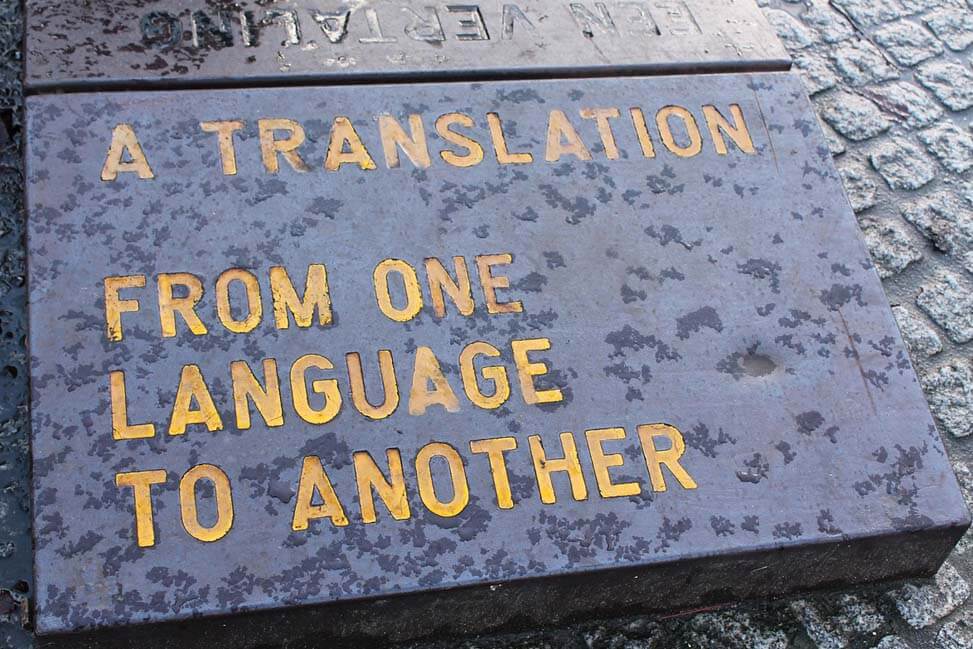1.Character Placement
Standing at the foot of the Great Wall, gazing at its magnificent serpent-like coil against the sky, you whip out your phone, eager to share this awe-inspiring moment with the world. But translating your heartfelt caption from Chinese to English suddenly feels like scaling that very wall…blindfolded. Yes, Chinese to English translation can be a daunting task, a linguistic Rubik’s cube offering challenges at every turn. But fear not, intrepid adventurer! Let’s map out the hurdles and equip you with the tools to conquer them.
character placement! Often overlooked, yet a silent, powerful force dictating the very essence of Chinese expressions. It’s the difference between a gentle breeze and a hurricane, between a blushing bride and a bloodthirsty warrior. So, how do we navigate this shifting sand dune of meaning?
From Atoms to Molecules: Think of characters as atoms, forming molecules (words) with specific meanings. Rearranging these atoms changes the molecule, sometimes subtly, sometimes drastically. “老师” (lǎoshī) means “teacher”, but swap the characters to “师老” (shīlǎo) and you’ve suddenly got “old teacher”. It’s a subtle shift, but the nuance is crucial.
Radical Re-Arrangement: Radicals, the building blocks of characters, also play a role. In “吃饭” (chīfàn), “吃” (chī) on its own means “to eat”, but the “饭” (fàn) radical, representing grain, transforms it into “to eat a meal”. Similarly, “说话” (shuōhuà) with the “口” (kǒu) radical for mouth means “to speak”, while “花说” (huāshuō) with the “花” (huā) radical for flower becomes “to praise” (literally, “flowers speak”).
Positional Power Play: Sometimes, a character’s position within a word alters its meaning entirely. Take “开门” (kāimén) meaning “to open a door”. Shift the “门” (mén) to the front with “门开” (mé kāi) and you’ve got “the door is open”. It’s the same characters, but their power dynamics have shifted.
Beyond Words: Grammar Interplay: Character placement also interacts with grammar. “好看” (hǎokàn) with the adjective prefix “好” (hǎo) means “beautiful”, but rearrange to “看好看” (kàn hǎokàn) and it becomes “to find something beautiful”. The placement of the verb “看” (kàn) changes the sentence structure and meaning.
2.Pinyin
For many learners of Chinese, it’s a double-edged sword. On one hand, it’s a bridge, letting us navigate the pronunciation jungle with familiar Latin letters. On the other hand, it’s a mischievous gremlin, hiding tones and quirks behind its seemingly simple facade. Let’s unravel the mysteries of pinyin and equip ourselves to wield it like a trusty language compass.
- Demystifying the Tones: Pinyin’s greatest nemesis? Tones! Those little squiggles above vowels hold the power to turn “ma” from “mother” to “hemp” or “horse.” Mastering them is key to avoiding hilarious misunderstandings. Practice listening, shadowing native speakers, and utilizing tone drills to train your ear and tongue.
- Beyond the Alphabet: Don’t be fooled by familiar letters! “Q” in pinyin sounds like “ch” in “church,” “X” like “sh,” and “Z” like “ts.” Remember, pinyin is a pronunciation guide, not a direct transliteration. Learn the unique sounds each letter represents.
- The Great Vowel Shift: Vowels in pinyin can be tricky beasts. “e” can range from short and light to long and diphthongal, depending on the context. Pay attention to vowel markings like “ü” and “ê” to avoid pronunciation meltdowns.
- Tying the Knot with Tones: Tones and vowels have a secret love affair. The way you pronounce a vowel can change depending on the tone. So, “ma1” (high level tone) is “mother,” while “ma3” (falling tone) is “horse.” This intricate dance takes practice and patience to master.
- Pinyin is Not a Translation: Remember, pinyin is a pronunciation tool, not a translation machine. Don’t rely solely on pinyin to understand or translate Chinese. Use it as a stepping stone to build your character recognition and vocabulary skills.
Bonus Tip: While pinyin is valuable, don’t get lost in its maze. Immerse yourself in authentic listening and speaking to develop a deeper understanding of pronunciation and intonation beyond the romanization system.
Pinyin can be a powerful ally, but treating it with respect and understanding is key. Embrace the challenge, conquer the tones, and watch your pronunciation blossom! Remember, the journey of mastering pinyin is part of the joy of learning Chinese, so enjoy the ride!
3.The complexity of Grammar
The complexity of grammar is definitely a key factor in making Chinese to English translation challenging, and its difficulty can vary depending on the specific text and your desired level of accuracy. Here’s a breakdown:
3.1 Challenges arising from grammatical differences:
- Word order: Chinese sentence structure often differs from English, with the subject-verb-object order being much more flexible. This requires understanding the underlying meaning and context to accurately rearrange the sentence in English.
- Particles: Chinese uses a plethora of particles that modify nouns, verbs, and adjectives, adding nuance and precision. These particles have no direct equivalents in English, and translating them accurately requires understanding their specific function and finding natural English alternatives.
- Implicit meaning: Chinese heavily relies on implied context and cultural knowledge, leaving out words that would be considered essential in English. This makes it crucial to interpret the unspoken meaning and translate it idiomatically in English.
- Lack of grammatical markers: Some grammatical elements like tense and plurality can be ambiguous in Chinese, meaning the translator needs to infer them from context and choose the appropriate English counterpart.
3.2 Impact of the text type:
- Formal vs. informal: Formal Chinese uses more complex grammar and vocabulary, making the translation more challenging. Informal language might present different issues, like regional slang or colloquialisms that require careful adaptation for an English audience.
- Technical vs. literary: Technical texts often contain specialized terminology and complex sentence structures, requiring specific domain knowledge and translation expertise. Literary texts pose challenges with figurative language, cultural references, and poetic nuances that need to be conveyed effectively in English.
3.3 Levels of difficulty:
- Simple sentences: With basic sentences, the grammatical challenges might be minimal, allowing for straightforward translation.
- Complex sentences: Longer sentences with embedded clauses, multiple modifiers, and nuanced meaning demands a deeper understanding of Chinese grammar and careful attention to structure and word choice in English.
- Literary texts: Translating literary works often requires significant expertise in both languages and cultural understanding to capture the author’s intention and the intricacies of the original text.
Overall, the complexity of Chinese grammar adds a significant layer of difficulty to the translation process. Translators need to be not only fluent in both languages but also possess a strong understanding of the grammatical nuances and cultural context to produce accurate and natural-sounding translations.
However, with experience, skill, and the right tools (like specialized dictionaries and glossaries), even complex grammatical challenges can be overcome in the pursuit of a high-quality Chinese to English translation.
4.Idioms
Translating Chinese idioms into English is a complex task due to the cultural nuances, figurative meanings, and lack of direct equivalents. The challenge lies in preserving the essence, adapting to regional variations, maintaining wordplay, explaining cultural references, adjusting to differences in structure, and staying attuned to evolving meanings. Successful translation requires linguistic dexterity, cultural awareness, and a seamless integration of idioms into the target language.
5.Sentence Construction
Conquering sentence construction in Chinese-to-English translation lies in juggling flexibility and flow. While Chinese offers freedom in word order, finding the natural English rhythm demands strategic sentence variations. Balancing detail with conciseness, adapting cultural elements like parallelism, and employing transitional words, active voice, and idiomatic expressions all play crucial roles in crafting an engaging and accurate English version. Mastering this dance between languages ensures your translation reaches its full potential.

6.Emotional Tone and Expressiveness
Masterfully translating Chinese emotions to English demands finesse. While both languages express feelings, Chinese whispers, relying on context and cultural cues, while English shouts. The translator’s dance: interpreting subtle hints, wielding evocative language, and choosing words that resonate. Avoiding overstatement, understanding cultural nuances, and capturing the essence of the emotional experience are key. By mastering this art, your translations will not only convey meaning, but also touch the reader’s heart.
7.Cultural difference
Cultural nuances waltz across languages, posing unique challenges in Chinese-English translation. Subtlety and context sway in Chinese, while English marches to directness. Humor, irony, etiquette, and values all pirouette with cultural flair, demanding careful interpretation. Through contextual awareness, research, and creative adaptation, translators can bridge these cultural gaps, preserving the essence while ensuring the message resonates with the target audience. Mastering this dance not only conveys meaning, but fosters understanding and appreciation across cultures.
8.The use of Chinese characters
The use of Chinese characters in translation from Chinese to English introduces a visual and symbolic layer that requires careful consideration. Here are key points regarding the use of Chinese characters in this translation process:
- ①Visual Aesthetics: Chinese characters possess visual aesthetics that contribute to the overall appeal of the text. Translators must balance the visual impact of characters with the readability and aesthetics of English text.
- ②Maintaining Symbolic Meaning: Chinese characters often carry symbolic meanings beyond their linguistic representation. Translators need to preserve these symbolic elements in English, finding equivalent expressions or providing explanations to convey the intended meaning.
- ③Integration into English Text: Integrating Chinese characters into an English text requires thoughtful placement. Translators must ensure that characters enhance rather than disrupt the flow of the English narrative, maintaining a harmonious coexistence between the two scripts.
- ④Cultural Significance: Chinese characters hold cultural significance, and their use can evoke specific cultural contexts. Translators should be aware of these cultural nuances, ensuring that the characters contribute to a nuanced understanding of the text for English-speaking readers.
- ⑤Bridging Language and Culture: The inclusion of Chinese characters serves as a bridge between the linguistic and cultural aspects of the original text. Translators play a crucial role in ensuring that this bridge is well-constructed, allowing English readers to access both the linguistic and cultural dimensions of the content.
- ⑥Explaining Characters’ Meanings: For characters with no direct English equivalent, translators may need to provide explanations or use transliterations. The goal is to convey the meaning carried by the characters without losing clarity in the English translation.
- ⑦Visual Harmony: Achieving visual harmony between Chinese characters and English text involves careful formatting and consideration of font styles. Translators must maintain a visually pleasing layout while preserving the legibility of both scripts.
- ⑧Educational Value: The use of Chinese characters can provide an educational element for English readers, offering insights into the language and culture. Translators can enhance the reader’s experience by integrating characters in a way that adds depth and educational value to the translation.
- ⑨Reader Accessibility: While Chinese characters can enrich the text, translators must ensure that their use does not hinder reader accessibility. Providing translations or explanations for characters contributes to a more inclusive and accessible reading experience for non-Chinese speakers.
In essence, the use of Chinese characters in translation requires a delicate balance between preserving their visual and symbolic richness and ensuring a seamless integration into the English text. Translators serve as cultural ambassadors, facilitating a connection between the linguistic and visual elements for a comprehensive understanding by English-speaking audiences.
9.Vocabulary Size
In Chinese to English translation, a comprehensive vocabulary is crucial for accurately conveying cultural nuances, idiomatic expressions, and technical terms. Translators must choose words that fit the tone and formality of the target audience while staying updated on language evolution. A rich vocabulary allows for varied expressions, contributing to fluency and reader engagement. Adapting vocabulary to the context, audience expectations, and linguistic preferences ensures an effective and culturally appropriate translation.
Language is deeply entwined with culture, and Chinese is no exception. Translators must be cultural chameleons, adept at deciphering the subtle nuances embedded in the language. From historical references to idiomatic expressions, understanding the cultural context is paramount. A successful translation not only.


